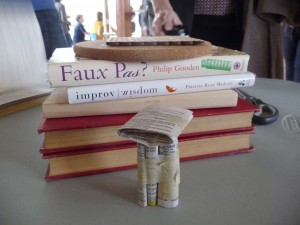Month: March 2014
-

Improbable Contest?
Aim: To bear the most weight. Method: Make a table, at least two inches high, out of a page from a telephone book and 11 3/4 inches of masking tape. Reward: A three month membership to the Diyode Community Workshop, here at 71 Wyndham St S., Unit B, where do-it-yourselfers make all sorts of…
-

Counting RPM with an arduino
For the latest IgniteGuelph contest, we needed a way to measure the speed of homebuilt electric motors. Simple RPM, not torque was the goal, so we opted to go with a light sensor on an arduino to count the light/dark cycles. First, we need to figure out the threshold value of the light sensor. We…
